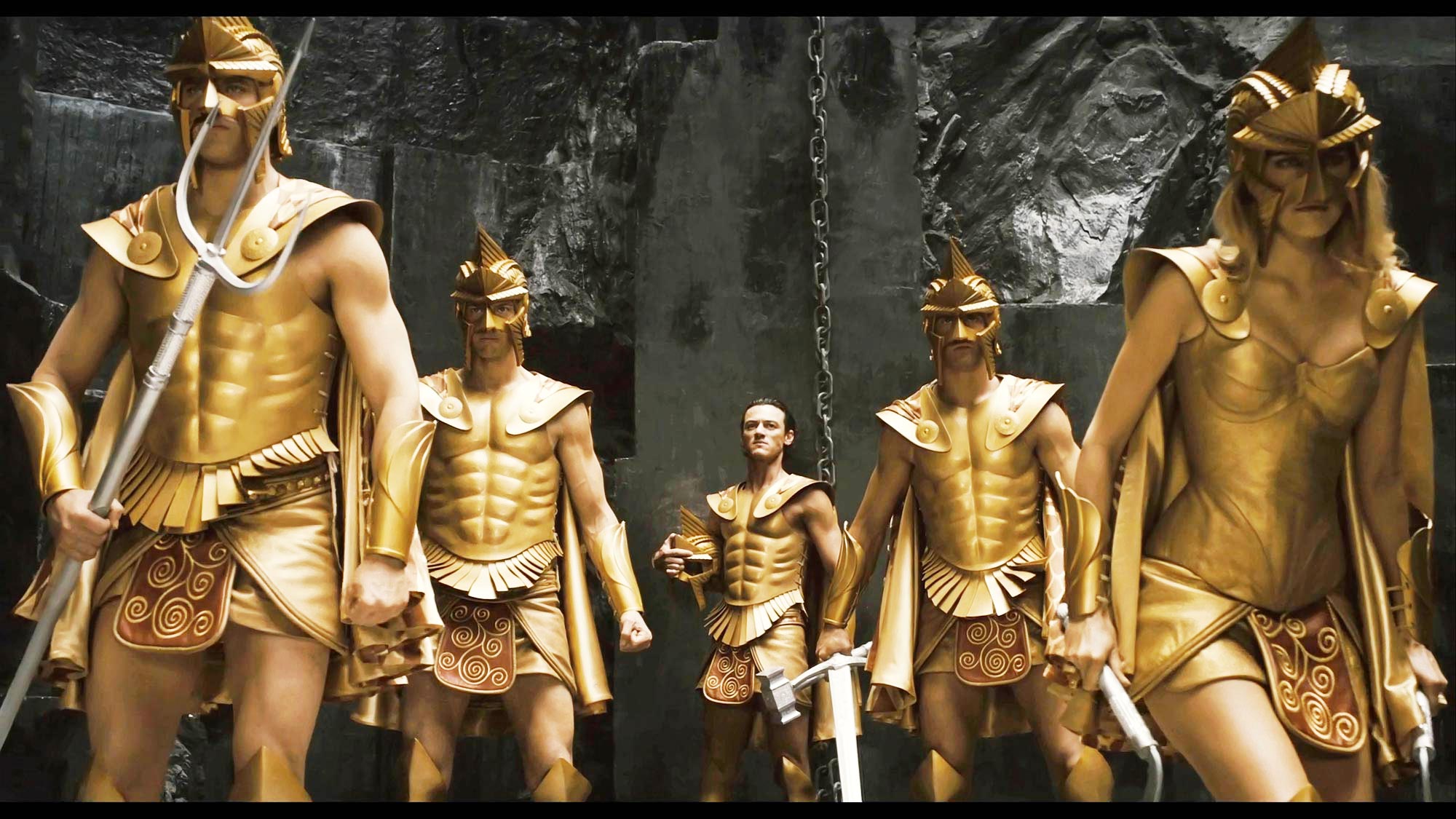Logline: An old man that is stuck in the past tries to change modern youth by radical means.
An old house with a neat front lawn. An old man wearing khaki pants, a navy blazer, and a duck billed hat steps out of the front door onto a wooden porch. He relaxingly closes the door, walks onto the sidewalk and proceeds to begin his daily tasks.
The old man walks casually down the street, calmly observing the neighborhood around him. He glances over to the other side of the street and sees a pair of young kids playing with a handheld game, eagerly looking over each other’s shoulders. A deflated red ball sits just a few meters away from where they are sitting on the sidewalk.
A red ball is kicked. Children’s laughter is heard.
The old man, slightly disappointed, continues on his walk as he does everyday. This is nothing new to him.
The man arrives at old fashioned coffee shop. He lethargically opens the door. The waiter behind the counter says to the old man “good morning Bob” the old man replies “good morning”. “black coffee like always?”. “Yes, thank you”. The waiter then asks him “Are you sure you don’t want to try our new espresso?” The old man grunts. The old man takes out some crumpled old dollars and places them on the counter. The waiter puts the daily newspaper on the counter in exchange. The old man takes the seat of his choosing. The waiter puts a napkin and his coffee on the table. He grabs the daily newspaper, and opens it up. In the corner of the of his eye he sees a group of people paying without giving a tip. He waves the page in front of him to reestablish his vision.
The old man is sitting in a park playing chess with a friend. He moves his queen in place and declares checkmate. In the background, kids are playing basketball. Suddenly, a basketball strikes the chessboard. A teenager runs past the two old men to retrieve the ball. The two old men yell in protest but the kids smirk and continue their pick up game.
The old man opens up the front door to his house and hangs up his jacket. Immediately an old phone begins to ring. He walks into the kitchen and picks up the phone. His son tells him how he and his son are supposed to come over that same day. He walks over to the refrigerator, glancing at some old photos. In passing his son asks about how that computer he sent him is working for him. The old man glances at a computer monitor sitting next to the garbage can in the front yard. The old man says fine.
The old man opens the front door for the dad and his son to walk in. The kid is texting on his phone even as his dad tells him to put it away. They exchange greetings.
At the dinner table dad and grandpa quietly eats while the kid is still texting on his phone. Dad seems to not be disturbed with his son texting at the table. Old man firmly asks the kid to put his phone away and that its rude to be on the phone at the dinner table. The kid reluctantly puts his phone on his lap. Dad suggests that the two of them go to the park together, for a little bonding time.
Old man and the kid are sitting a few feet away from each other on a park bench. The old man reaches into a small plastic bag and disperses some bird feed to the pigeon. The kids seems very bored and irritated. The old man offers the kid the bag, but instead he pulls out a gaming handheld. The old man turns back towards the birds and continues feeding them.
The kid is sitting in front of the TV set trying to set up his game console. The old man is sitting in his chair reading his paper. The front page talks about how “technology has ruined modern society”. However, when he looks to the rear of the TV set, he discovers that the game system is not compatible with the TV. The kid screams at the TV displaying static in frustration. Suddenly, the old man gets up, picks up the game console, and thrusts it on the floor. The kid, in utter awe and confusion, is yanked by his father while he is yelling at his dad (old man) about how . . .
The old man stands confused and unsure of himself as dad and son pack up to leave. The door closes on the old man, still dazed by the unfolding of events.
Tuesday, February 14, 2012
Short Film Treatment: Rubik's Cube
Logline: A man has lost all his passions, a women tries to make him see the happiness and joy in life.
A man and a women wait at the same bus stop every single day for the past year. The man is dressed nicely in a suit, and the women is dressed nicely for her job. The man has a somewhat cynical view on life, he views life as pointless, but he lives life so that he doesn't hurt his family. The woman one day finds a rubiks cube. She tries to solve the rubiks cube but can only get one side. After a month the guy becomes so annoyed that he grabs the rubiks cube out of her hand and solves it quickly, then hands it back to her. She becomes interested in him and follows him onto the bus.
She decides to sit next to him on the bus and tries to talk to him. She asks him who he is and what he does? Over the next week she pesters him but he is solid and wont tell her. Finally he tells her it doesnt matter what he does. It doesn't matter what he or she or anyone ever does because we are all eventually going to die. She pulls out the rubiks cube and tells him that life is like a rubiks cube. Most of the time life cant be solved, its complicated, there are problems, we have struggles. Rarely does anyone solve a rubiks cube, just like how rarely people solve life and are completely content. She asks him that although we all eventually die we should live life to have joy and experience happiness.
A man and a women wait at the same bus stop every single day for the past year. The man is dressed nicely in a suit, and the women is dressed nicely for her job. The man has a somewhat cynical view on life, he views life as pointless, but he lives life so that he doesn't hurt his family. The woman one day finds a rubiks cube. She tries to solve the rubiks cube but can only get one side. After a month the guy becomes so annoyed that he grabs the rubiks cube out of her hand and solves it quickly, then hands it back to her. She becomes interested in him and follows him onto the bus.
She decides to sit next to him on the bus and tries to talk to him. She asks him who he is and what he does? Over the next week she pesters him but he is solid and wont tell her. Finally he tells her it doesnt matter what he does. It doesn't matter what he or she or anyone ever does because we are all eventually going to die. She pulls out the rubiks cube and tells him that life is like a rubiks cube. Most of the time life cant be solved, its complicated, there are problems, we have struggles. Rarely does anyone solve a rubiks cube, just like how rarely people solve life and are completely content. She asks him that although we all eventually die we should live life to have joy and experience happiness.
Wednesday, January 18, 2012
Ideologies in Film
1. Ideology originates from politics and economics. Ideology is a certain set of beliefs. Ideology comes in the two forms of explicit and implicit. Explicit ideology is when the beliefs portrayed in the film are obvious. Implicit ideology is when the beliefs become debatable in the film, and beliefs are not obvious. The ideology must be examined through reason and arguments.
2. Jason Statham has a predictable ideological package of a man who always manages to attain revenge on those who harm him or his allies. Some of his highly action packed films are: The Transporter, Collateral, Crank, War, Death Race, The Expendables, Blitz, The Mechanic, and Killer Elite. In the Mechanic he played a role as one of the best assassins in the world. He raised young man to become just like him. The young man almost killed him, but Statham was able kill the man. Jason Statham’s typical characters can be described as: violent, fierce, calm, dangerous, and ruthless. His next role will have him as an expert killer. He will fight many people to overcome a challenge and will succeed.
3. A film that I have recently enjoyed was the movie Source Code. My favorite character in this film was Colleen Goodwin played by Vera Farmiga. I liked that the director drastically developed the character of Goodwin. She remains calm and collected whenever speaking to Colter, and only wants to fulfill her job. She becomes empathetic toward Colter, for she notices his suffering in being used as a tool. Her empathy causes her to fulfill Colter’s wish by killing him, and allowing him to live in a parallel universe. The values I am being asked to share are the importance of human empathy for one another. My feelings are being manipulated due to the slow cuts, and meticulous music as Goodwin kills Colter. The artistic consequence is that the movie is forced to have a happy ending. There is little financial consequence, for most people will see the movie because of its happy ending.
4. Ideologies change the way a narrative is presented to its audience as the time and era changes. This is because human ideology, values, and morals are constantly changing. The film The Graduate made in the 1960s was controversial for its time. People were not used to love interests between older women and younger men. Many people were conservative and rejected the nudity. If the movie was shown now, people would not reject it. The modern era is less conservative. It has become normal to have movies that contain nudity and sex scenes.
5. I do feel that films can affect you and your behavior without being conscience of it. Ever since I was little I have watched many a Disney feature. These movies contain morals, and values that teach children right from wrong, bad guys from good guys. When examining the film Friend with Benefits the initial explicit ideology revolves around sex. As the movie progresses the ideology changes to holding onto important relationships.
6. Suspension of disbelief is when we accept something as real when we do not fully know that it can be real. An example of suspension of disbelief can be applied the film Source Code. There are many gaps in the film that blur the line between reality and fiction. The first gap is seen in the idea of a parallel universe through quantum mechanics. In theory it is plausible, but no one knows for sure that a parallel universe exists. A second gap that I noticed was the evacuation of Chicago. There was barely anyone in Chicago within 2 hours, because everyone had evacuated. This is impossible, because not everyone can evacuate Chicago within 2 hours without a heavy amount of traffic, and looters.
7. Financial support of a film and the ownership of a production company greatly influences the ideology represented in film. This is why so many American movies end with cliché happy endings. A prime example would be the movie I am Legend. According to cracked.com Neville (Will Smith) was never supposed to die. The vampires were actually benevolent creatures who just wanted back another vampire that Neville captured. Audiences didn’t like the ending, therefore it was changed to the current one where Neville must commit suicide to save his allies.
Tuesday, January 17, 2012
Genre Study
1. Drama- Martial Arts
2. IP Man
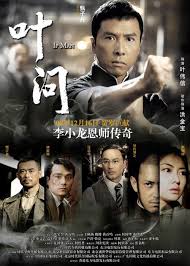
The Karate Kid

Warrior
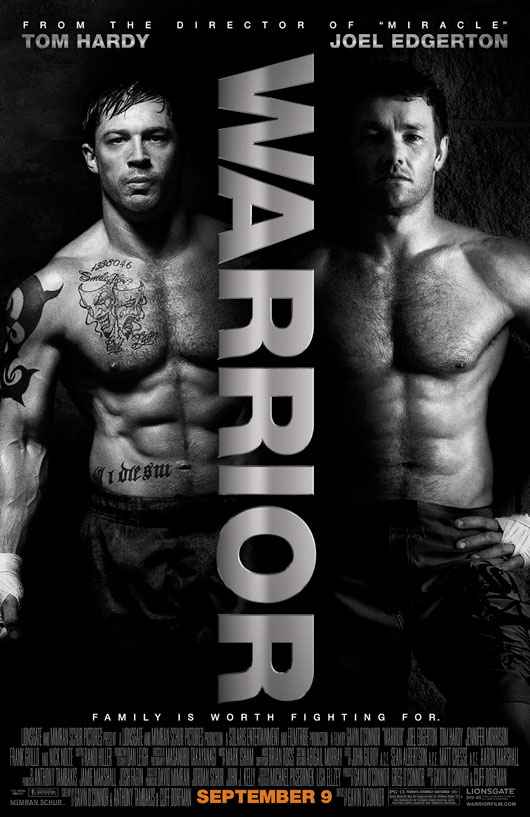
3. Narritive Conventions
The typical narritive conventions starts out with a single hero. The hero is usually male. The hero is usually supressed, and does not have heroic characteristics. The hero runs into a problem, and someone helps him solve that problem. In order to solve the problem the hero must fight in an event or competition. The hero trains hard, and eventually wins the competition. The ending is happy with the hero accomplishing his or her goals.
4. Defining Conventions
2. IP Man
The Karate Kid

Warrior

3. Narritive Conventions
The typical narritive conventions starts out with a single hero. The hero is usually male. The hero is usually supressed, and does not have heroic characteristics. The hero runs into a problem, and someone helps him solve that problem. In order to solve the problem the hero must fight in an event or competition. The hero trains hard, and eventually wins the competition. The ending is happy with the hero accomplishing his or her goals.
4. Defining Conventions
The typical situations: The main character tends to face a challenge. Winning a fight will help the main character overcome the challenge. In IP Man the General wants IP Man to teach Wing Chun to the Japanese army. IP Man needs to fight Miura to protect Chinese dignity and the art of Wing Chun. In The Karate Kid Daniel needs to learn martial arts to fight of bullies. In the Warrior Brendan and Tommy both need the money to help their families.
Typical characters: The main characters in martial arts movies are men. This is because the films conform to the stereotype of men as fighters. The films are also expect men to see martial arts movies. There are usually female characters that aide the men in these movies. These female characters can sometimes have revealing attire to appeal to the male audience. A counter to the typical male character is Million Dollar Baby, where Hilary Swank plays the role as the main fighter.
Typical dress: Dress style varies with setting. IP Man and Karate Kid both wear Asian martial arts attire. Where as the characters in Warrior wear TAP OUT attire. The dress can be revealing and typically displays the area above the waist. The characters are portrayed as strong, for they typically have six packs and ripped muscles.
Typical Setting: The typical setting varies with each movie. A majority of the movie usually takes place in a place where the main characters train. This can be a dojo, a boxing ring, or outside. Different seasons are sometimes used to show the progression of the main character as he trains.
Typical objects or equipment: There is always training equipment. A common piece of training equipment would be a punching bag. The equipment is based on the setting; thus, it is not always consistent throughout the genre. IP Man and Karate Kid have minimal equipment, where as, Warrior has more equipment. Warrior contains punching bags, jump ropes, punching gloves, and weights.



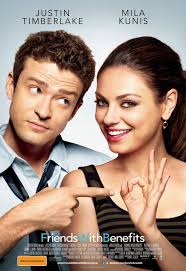
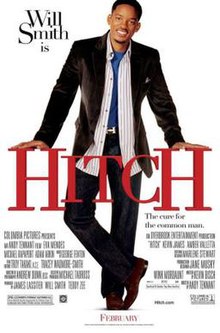

1. Family comedies
2. The Pacifier

Cheaper by the Dozen

The Game Plan

3. Narrative Conventions
The narrative usually always follows the same general direction. The family is initially separated and does not have good relationship. As the film progresses challenges present themselves to the family. As the family overcomes these challenges their bond becomes stronger. By the end of the movie everyone is happy and loves each other.
4. Other Narrative Conventions:
Typical situations: The characters all face a certain challenge that they must overcome together. In the Pacifier Vinn Disel must play the role of the mother. In Cheaper by the Dozen the relationship of the family is strained, because some of the kids pick on the other kids. In the Game Plan Dwayne Johnson must look over a child that he never knew was his.
Typical characters: The roles vary throughout each movie. The whole family plays a role as equal main characters. Men are sometimes put in female positions to create comedy. The men initially fail, but are eventually able to succeed.
Typical dress: The dress is PG rated. The dress is not too sketchy, for the intended audiences are families of all ages.
Typical setting: The majority of the setting takes place at a house where the main characters live. The movie revolves around everyday challenges that is offered by a typical household environment.
Typical look or style: The lighting is always bright to convey positive and joyful emotions. There also tends to be high color saturation to brighten up the mood.
Romantic Comedies
Friends with Benefits
Hitch

Just Go With It

Narrative Conventions:
The narrative typically begins with a characters who look for explicit characteristics in the other sex. Their motivations are usually only sexual. The first relationship is only one dimensional. As the movie progresses the main character realizes that sexual motivations are not the only things that matter in a relationship. The main character discovers that implicit characteristics are truly important. The main character discovers that there is more to life than just sex. At the end of the movie the main character falls in love with a multi-dimensional character.
Other Narrative conventions:
Typical characters: The characters used are mainly male. Males are stereotyped as only sexual, and that is what they look for in a partner. At the end of the movie the main character rejects this stereotype and falls for the cliché of love. The characters can also be female, as in the movie Friends with Benefits.
Typical dress: Extremely revealing, and sometimes also include sex scenes. This is to appeal to the male audience, who go to the movies with female counterparts. The intended audience is typically above the age of 18.
Typical dialogue: Dialogue is usually inappropriate. Since it is a comedy there is a heavy use of sexual innuendos. Swearing is often used.
Typical body language: It is usually seductive or revealing. Body language may also become awkward to add humor to the scene.
Typical look or style: The look or style is often bright and highly saturated. This is done to convey feelings of happiness and joy. A tone of jubilance is created. People are not able to laugh when there is a melancholy tone.
Tuesday, January 10, 2012
Writing about Film
The first form of film writing described in the article is Formal Analysis. It is discussing the movie as a whole by breaking up different parts of the movie, such as, cinematography, lighting, setting, acting techniques, score, etc. A Formal Analysis would be a typical analysis.
The second form of film writing is film history. All films have a history to them. They are usually based around a certain time period. For example the movie ‘Immortals’ was based around the time period of ancient Greece. This enabled them to take advantage of the mythology of the era and incorporate it into the film. Special effects were taken advantage of to display the supernatural powers of Greek Gods. Films also have production histories of problems, and reasons for why and when they were made. Film history involves the banning or wide acceptance of certain movies due to culture values or morals.
The third form of film writing is Ideological Papers. Films are created to promote a belief. When watching a film, it is important to understand that the film may being trying to manipulate our feelings about certain topics. The movie ‘Source Code’ promotes ideas of quantum mechanics and the possibility of a parallel universe.
The fourth form of film writing is Cultural Studies/ National Cinemas. This is when the films reflect the cultures and nations that they were produced in. Films are usually produced to appeal to a certain culture or society. A French filmmaker would take a different approach to a movie than an American filmmaker would approach a movie.
 The fifth form of film writing is discussion of the Auteur. This criticizes the film as the view of a single person, usually the director. When discussing Auteur one must consider that film is still collaborative, because people such as the make-up, cinematographer, editor all have a part in the final product. This form is often used. An example would be Michael Bay. Made famous for many movies, most importantly for Transformers. He is often criticized for making high paced action movies, while using women to appeal to 16 year old boys.
The fifth form of film writing is discussion of the Auteur. This criticizes the film as the view of a single person, usually the director. When discussing Auteur one must consider that film is still collaborative, because people such as the make-up, cinematographer, editor all have a part in the final product. This form is often used. An example would be Michael Bay. Made famous for many movies, most importantly for Transformers. He is often criticized for making high paced action movies, while using women to appeal to 16 year old boys. Annotating a Film Sequence involves taking notes on a specific shot sequence or scene. This is beneficial because one is able to break down a scene and examine all the different parts. The editing, choice of shots, score, lighting all can be examined. It is beneficial because it helps understand why the film creates a certain effect.
When thinking beyond the frame one should consider other aspects that do not pertain to a certain shot or scene. One should question who made the film. The scene might have similar themes or motif that relate to other movies made by the same director. Production history must be considered to understand whether or not it was a big or small production movie. Read what critics have to say, and see if it aides your analysis. Examine the genre and whether or not the movie uses clichés in the genre. Is the film also interesting culturally.
Subscribe to:
Posts (Atom)
